
- The Architectural Brilliance of Casa Batlló: A Masterpiece by Gaudí
- Exploring the Symbolic Colors and Shapes in Casa Batlló's Design
- A Historical Overview of Casa Batlló: From Renovation to Iconic Landmark
- Visiting Casa Batlló: Tips for an Unforgettable Experience in Barcelona
- The Cultural Significance of Casa Batlló in Catalan Modernism
- Understanding the Innovative Techniques Used in Casa Batlló's Construction
Located in the heart of Barcelona, Casa Batlló stands as a testament to the genius of Antoni Gaudí, one of the most celebrated architects in history. This architectural masterpiece showcases the unique Modernisme style, characterized by its organic forms, vibrant colors, and intricate detailing, making it a must-visit for art and architecture enthusiasts alike.
Often referred to as Casa Batlló: Gaudí's Historic Gem in Barcelona, this iconic building captivates visitors with its whimsical façade and imaginative interior spaces. Each corner of Casa Batlló tells a story, reflecting Gaudí's deep connection to nature and his innovative spirit, ensuring its place as a highlight of any trip to the city.
The Architectural Brilliance of Casa Batlló: A Masterpiece by Gaudí
The architectural brilliance of Casa Batlló lies in its stunning design elements and meticulous attention to detail. Gaudí's innovative use of light, color, and texture creates a dynamic visual experience that enchants anyone who steps inside. The organic shapes and flowing lines throughout the building evoke a sense of harmony with nature, making it a true architectural jewel of Barcelona.
One of the most striking features of Casa Batlló is its façade, which is adorned with colorful mosaics made from broken ceramic tiles. This unique technique, known as trencadís, allows for a vibrant play of colors that shifts with the sunlight. Visitors are often drawn to the following remarkable aspects:
- Bone-like columns that resemble the skeletal structure of a creature.
- The undulating roof that mimics the shape of a dragon's back.
- Intricate stained glass windows that filter light into the interior.
Inside, Casa Batlló continues to surprise with its fluid spaces and innovative layouts. Gaudí designed each room to maximize natural light and airflow, reflecting his fascination with biophilic design. The noble floor features a grand hall with a breathtaking staircase, while the unique furniture and fittings showcase craftsmanship that complements the overall aesthetic.
In summary, Casa Batlló serves as a remarkable example of Gaudí's architectural genius, blending artistry and functionality in a way that remains unparalleled. Its enduring legacy continues to inspire architects and artists, making it a vital part of Barcelona's cultural heritage.
Exploring the Symbolic Colors and Shapes in Casa Batlló's Design
The design of Casa Batlló is a vibrant tapestry of symbolic colors and shapes that reflect Gaudí's deep appreciation for nature. The façade's colors—from deep blues to earthy greens—evoke the essence of marine life, while the organic forms mimic the flow of water and the contours of natural landscapes. These choices not only enhance aesthetic appeal but also serve to connect the building with its environment.
Gaudí's use of shape in Casa Batlló is equally significant. The building features elements that resemble natural forms, such as bones, waves, and even dragon scales. These shapes can be summarized as follows:
- Curved lines that mimic the fluidity of water.
- Organic shapes that evoke the forms of plants and animals.
- Structural elements resembling a dragon's back, reinforcing the mythical narrative.
Colors are not merely decorative; they carry profound meanings. For instance, the blues symbolize tranquility and harmony, while the warm hues represent vitality and life. Gaudí's selection of tiles and mosaics creates an ever-changing interplay of light and color, allowing visitors to experience the building's essence from different perspectives as they move through its spaces.
Ultimately, exploring the symbolic colors and shapes in Casa Batlló unveils the layers of meaning embedded in Gaudí's design. Each element is intentionally crafted to resonate with nature, making the building an enduring masterpiece that invites both admiration and reflection.
A Historical Overview of Casa Batlló: From Renovation to Iconic Landmark
Casa Batlló's history began in 1877 when it was originally constructed as a conventional building. However, it was in 1904 that Antoni Gaudí undertook a complete renovation for the wealthy Batlló family, transforming the structure into a visionary work of art. This ambitious project not only redefined the architectural landscape of Barcelona but also established Casa Batlló as a pioneering example of Catalan Modernisme.
Over the years, Casa Batlló has garnered significant recognition and accolades. In 2005, it was designated a UNESCO World Heritage Site, cementing its status as an architectural landmark. The building's unique design elements and innovative construction techniques have made it a subject of study for architects and enthusiasts worldwide. Key milestones in its history include:
- 1970: Casa Batlló was opened to the public, allowing visitors to experience its enchanting interiors.
- 2002: The building underwent restoration to preserve its original features while enhancing visitor experience.
- 2013: The introduction of an interactive multimedia guide to enrich the visitor's journey through Gaudí's masterpiece.
Today, Casa Batlló stands not only as a symbol of Gaudí's groundbreaking work but also as a vibrant cultural hub in Barcelona. Regular exhibitions and events celebrate its artistic heritage, further solidifying its role as a beloved destination for tourists and locals alike. The building's legacy continues to evolve, attracting a new generation of admirers who appreciate its beauty and significance.
In conclusion, Casa Batlló's journey from a simple renovation to an iconic landmark reflects the vision and creativity of Antoni Gaudí. Its architectural innovations and rich history resonate with visitors, making it a vital part of Barcelona's cultural identity. As this historic gem endures through time, it continues to inspire awe and admiration among all who encounter it.
Visiting Casa Batlló: Tips for an Unforgettable Experience in Barcelona
Visiting Casa Batlló is an experience that transcends mere sightseeing; it immerses you in the artistic vision of Antoni Gaudí. To make the most of your visit, consider booking your tickets online in advance to avoid long queues. This will allow you to explore the enchanting spaces of the building with more time and less stress. An audio guide is also highly recommended, as it provides valuable insights into the intricate details and stories behind each design element.
Timing your visit can significantly enhance your experience. Early morning or late afternoon are ideal times to avoid the crowds and enjoy a more intimate atmosphere. Additionally, consider visiting during weekdays instead of weekends for an even quieter experience. Don’t forget to take your time to absorb the spectacular features, such as the stunning stained glass windows and the fluid architectural forms that resonate with nature.
For a truly unforgettable experience, immerse yourself in the building's ambiance by participating in guided tours that are often available. These tours typically delve deeper into Gaudí's vision and provide access to areas that might be overlooked. Be sure to capture the vibrant colors and unique shapes through your camera lens; the building is a feast for the eyes, showcasing dynamic visuals that change with the light throughout the day.
Lastly, after your visit, take a moment to explore the surrounding area, which is rich with shops and cafes that reflect the spirit of Barcelona. Enjoying a local meal or a coffee nearby allows you to reflect on your journey through Gaudí's historic gem while soaking in the vibrant energy of the city. Whether you're an architect, an art lover, or simply a curious traveler, Casa Batlló promises to leave a lasting impression.
The Cultural Significance of Casa Batlló in Catalan Modernism
Casa Batlló holds immense cultural significance within Catalan Modernism, as it embodies the movement's core principles of creativity and innovation. Designed by Antoni Gaudí, the building challenges traditional architectural norms through its organic forms and vibrant colors, reflecting a deep connection to nature. This unique approach not only showcases Gaudí's artistic genius but also represents a broader cultural shift towards embracing individuality and expression in early 20th-century Catalonia.
As a pivotal work within the Modernisme movement, Casa Batlló serves as a visual manifesto of Catalonia's identity. The building's intricate details, such as the trencadís technique used in its mosaics, symbolize the region's artisanal craftsmanship and commitment to originality. Furthermore, Gaudí's integration of natural elements into the design reinforces the idea of harmony between architecture and the environment, which is a key tenet of Catalan Modernism.
The influence of Casa Batlló extends beyond its aesthetic appeal; it has become a cultural icon that attracts visitors from around the globe. Through educational programs and exhibitions, the building promotes awareness of Catalan history and artistic heritage, ensuring that Gaudí's vision continues to inspire future generations. This cultural significance is reflected in its recognition as a UNESCO World Heritage Site, highlighting its importance as a landmark of architectural innovation.
In summary, Casa Batlló is not merely an architectural masterpiece but a vital part of Catalonia's cultural landscape. Its groundbreaking design and the philosophical underpinnings of Catalan Modernism resonate with audiences today, reminding us of the enduring power of art and architecture to shape identity and inspire creativity. The legacy of Casa Batlló will undoubtedly remain a cornerstone of Barcelona's rich cultural tapestry.
Understanding the Innovative Techniques Used in Casa Batlló's Construction
Understanding the innovative techniques used in the construction of Casa Batlló reveals the profound creativity of Antoni Gaudí. One of the most distinctive methods he employed was the use of organic forms in both structure and decoration. This approach not only enhances the aesthetic quality of the building but also exemplifies Gaudí's mastery of integrating architecture with nature, creating spaces that feel alive and harmonious.
Gaudí's design incorporated a variety of unconventional materials and construction techniques that were revolutionary at the time. For instance, he utilized trencadís, a mosaic technique involving broken tile pieces, to create vibrant surfaces that evoke the natural world. This method allowed for greater artistic freedom and resulted in unique textures and patterns that define Casa Batlló's exterior. Key techniques include:
- Use of light to create dynamic interior spaces.
- Curvilinear forms that challenge traditional linear architecture.
- Innovative ventilation systems to enhance airflow and comfort.
Additionally, Gaudí focused on the structural integrity of Casa Batlló by employing catenary curves in the design of beams and arches. This technique allows for a distribution of weight that enhances stability while providing aesthetic elegance. His groundbreaking approach to building materials and forms laid the groundwork for future architectural advancements, making Casa Batlló a pioneering example of modern construction.
In summary, the innovative techniques used in Casa Batlló's construction not only showcase Gaudí's visionary talent but also reflect a significant evolution in architectural practice. By merging artistry with engineering, Gaudí created a structure that continues to inspire admiration and study among architects and art lovers around the world.
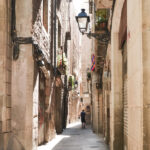 Discover Gothic Quarter's winding alleys: perfect for getting lost and finding hidden gems.
Discover Gothic Quarter's winding alleys: perfect for getting lost and finding hidden gems.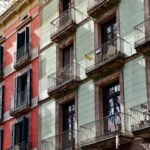 Construction of Sagrada Familia in Barcelona has no official completion date, expected around 2026.
Construction of Sagrada Familia in Barcelona has no official completion date, expected around 2026.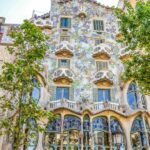 Casa Batlló: Prime Art Nouveau Example
Casa Batlló: Prime Art Nouveau Example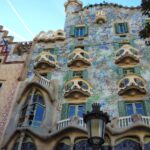 Gaudí's Masterpiece: Casa Batlló
Gaudí's Masterpiece: Casa Batlló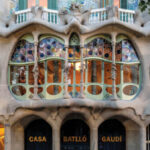 Casa Batlló: Unique Design and Detailed Materials
Casa Batlló: Unique Design and Detailed MaterialsIf you want to know other articles similar to Casa Batlló: Gaudí's Historic Gem in Barcelona you can visit the category WHERE YOU CAN GO.
Deja una respuesta

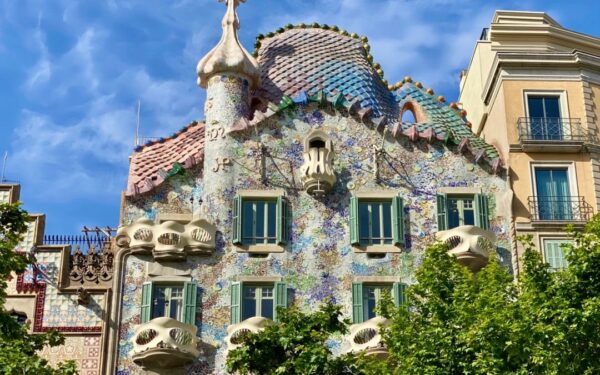








Read more!